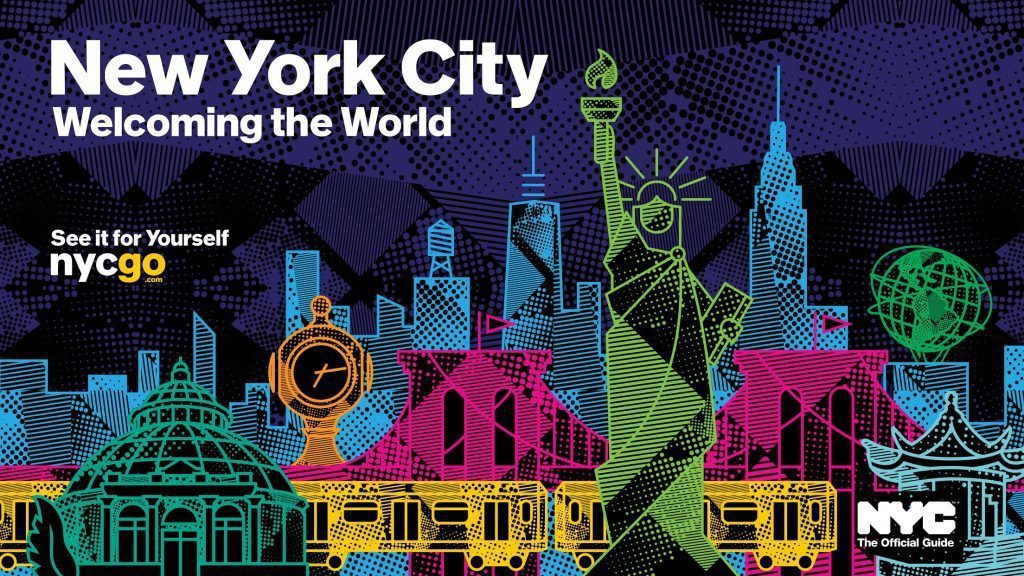Skift Take
While a change in tune on borders and immigration from the White House could help some non-U.S. travelers reconsider ditching U.S. travel plans, it seems in many cases the damage has already been done.
The melting pot of New York City’s foreign visitors is expected to become smaller in 2017 as executive orders, immigration policies, and unfavorable exchange rates weigh on international travelers’ decisions to visit the U.S.
NYC & Company, the destination marketing organization that promotes tourism in New York City, announced on Tuesday that it’s forecasting 300,000 fewer international travelers will visit the city this year, according to data from Tourism Economics, an Oxford Economics Company. This forecast accounts for changing attitudes towards U.S. inbound travel and immigration since the Trump Administration took office on January 20.
>>Related: In January, Skift launched a deep dive on how gentrification powers New York City’s tourism industry.
New York City is the most visited U.S. city by international travelers with more than 12 million foreign visitors in 2016. Tourism Economics expects domestic visitation to the city to buoy any loss from international travelers with 49.3 million U.S. travelers forecast to visit through December.
Some 61.7 million U.S. and international travelers will visit New York City in 2017, based on projections, compared to the 60.7 million that visited last year (a 1.6 percent increase).
Despite a projected overall increase in visitors this year, the city isn’t celebrating. One international visitor spends as much as four domestic U.S. visitors in New York City, NYC & Company said in a statement, and tourism spending in the city could face setbacks with fewer foreign visitors.
Starting in March, NYC & Company said it’s spending $3 million to replace its outdoor billboard advertisements in its leading international visitor markets — Mexico, the UK, Germany, and Spain — with the advertisement pictured below with the tagline “New York City — Welcoming the World.”
The organization said its international tour operators and airline partners will also use their own channels and reach to spread the advertisement to travelers.
More broadly, Adam Sacks, President of Tourism Economics, said the entire U.S. could suffer from less international visitation this year and he expects the largest losses from Mexico, Europe and the Middle East. “The recent executive order only adds to the existing headwinds of a strong dollar and a weak global economy that are weighing heavily on U.S. inbound travel,” said Sacks.
Tourism Economics compared the current U.S. political environment to that of 2000 to 2006 for its forecast, “This was a time when visa policy was particularly restrictive and antipathy toward U.S. foreign policy was relatively prevalent,” said Sacks.
From 2000 to 2006, overseas travel to the U.S. decreased three percent and all international travel (including Canada and Mexico) saw zero growth during the six years. International arrivals to the U.S. during the past eight years, however, have grown 35 percent. “This is the potential order of magnitude facing the U.S. travel industry,” said Sacks. “It’s extraordinarily difficult to convey a message of welcome above the volume of ‘America first’ rhetoric as it reverberates through immigration, trade and visa policies,” he said.
Tourism data company ForwardKeys found inbound U.S. bookings from many overseas markets have been down since the presidential election in November. Global bookings for flights to the U.S were down 6.5 percent from January 28 to February 4, the week that President Trump’s travel ban took effect, for example.
After the Middle East, Asia-Pacific, Western Europe and Northern Europe had the largest decreases in U.S. flight bookings falling 15.8, 13.6 and 6.6 percent year-over-year for January 28 to February 4, respectively. Data also show U.S. flight bookings already made for arrivals from Europe during the next three months were down 2.2 percent and 2.7 percent for the weeks of January 28 and February 4, respectively.
While these forecasts could change if the Trump Administration softens its stance on immigration and visa policy and drops its travel ban, the White House has only intensified its stance on border security in recent days and weeks.
The Daily Newsletter
Our daily coverage of the global travel industry. Written by editors and analysts from across Skift’s brands.
Have a confidential tip for Skift? Get in touch
Photo credit: New York City is preparing for a weaker year of international visitation. Pictured are tourists in New York City's Times Square. drpavloff / Flickr

